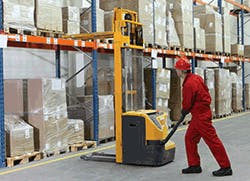The 2015 Women's World Cup just wrapped up in my home country of Canada. Not only did the United States win the championship, but they became the first team to win it three times!
The sports press has made a big deal about the strategy modifications the U.S. employed for the tournament: the changes in personnel, the tiny tweaks to their set plays and the adjustments to their training regime. All of these changes were a result of taking a thorough review of their key performance metrics of past games. The preparation and training targeted their weaknesses and took advantage of each team member's strengths.
The data-driven approach worked perfectly. With each victory, the confidence in their approach grew, and led to the domination they showed in the final game.
As an EHS professional, if you were to conduct a similar assessment of your own key performance metrics (injury statistics), what "weaknesses" would be revealed? And, more importantly, what would your championship strategy look like?
My bet is that many of you would find a significant weakness to be your high number of injuries associated with manual material handling tasks (tasks that include lifting, lowering, pushing, pulling or carrying) and your approach to dealing with them.
How Big Is the Problem?
The 2014 Liberty Mutual Workplace Safety Index reports that "overexertion involving outside sources" was ranked first among the leading causes of disabling injury in 2012, accounting for 25.3 percent of the overall national burden ($15.1 billion in direct costs).
Compare that to repetitive motion injuries, which are on the decline and represent only 3.1 percent of injuries in 2012. This is understandable, since there has been an increased awareness regarding prevention of repetitive motion injuries (for example, carpal tunnel syndrome).
It often is more difficult, and sometimes more expensive, to reduce the risk associated with overexertion injuries, particularly when many businesses have a large portion of the workforce performing some sort of manual material handling on a daily basis. So how can we reduce overexertion injuries?
The first step in the process, and the easiest in many cases, is to identify the "hot spots." You probably know where they are without investing a lot of time. If you don't, review your injury logs, ask employees for feedback, conduct formal surveys, identify production bottlenecks or perform the task yourself.
Once a "hot spot" is identified, you can use the National Institute for Occupational Safety and Health (NIOSH) Lifting Equation (NIOSH LE) to quantify the risk. In 1991, NIOSH commissioned a panel of research experts to develop a model to determine if a lifting or lowering task during manual material handling is safe for healthy working adults. The NIOSH LE is designed for evaluating single-task and multiple-task lifting and lowering scenarios based on research that combines biomechanical, psychophysical and physiological criteria in the development of a lower-back injury.
The equation – RWL = LC x HM x VM x DM x AM x FM x CM – is simpler than it appears. It uses six task variables and a load constant (LC) to establish a recommended weight limit (RWL). The RWL is the amount of weight that an employee can safely lift, given a specific job geometry, frequency and duration. This applies to 99 percent of men and 75 percent of women.
The LC is what the majority of the workforce can safely lift, given an absolutely perfect lifting scenario – for instance, the back is neutral, no twisting, no reaching, etc. – once a day. The load constant is 51 pounds (23.2 kg). Put another way, the equation will never recommend a RWL of greater than 51 pounds.
The six work task variables (multipliers) that work with the LC to determine the RWL include horizontal distance, vertical location, travel distance, angle of asymmetry, frequency and coupling.
Think of the LC as the starting point. As you apply each work task variable to the equation, it is converted to a multiplier that takes a "bite" off the LC (51 pounds) to ultimately calculate the RWL. If the work task variable is considered "optimal" (load close to the body, at waist height, etc.), there will be no impact on the LC. However, move just a tiny fraction away from optimal and the multiplier starts to nibble away at the LC. The farther away from optimal each variable gets, the bigger the bite.
For example, if the load starts 20 inches away from you (or 4 inches off the ground), suddenly your nibble is more like a giant mouthful. You can watch the RWL erode quickly if you have several variables that are less than optimal.
When brainstorming conceptual improvement ideas, use the data provided by the NIOSH LE to get the biggest bang for your buck. The equation identifies the multiplier with the biggest influence on the RWL and prioritizes the one you should focus on improving. In my experience, the two biggest influencers on how dangerous a lift is are horizontal distance and vertical location.
What Are the Best Solutions?
For reducing the risk of injury while performing lifting and lowering tasks, off-the-shelf solutions typically fall into one of two categories: work positioners and lift assists.
Work positioners include turntables, lift carts, high-lift pallet jacks and lift-and-turn tables. For a traditional palletizing job, the NIOSH LE likely will tell you that getting the work as close as possible to the employee is your primary goal. A turntable that allows the employee to get close to the load, even if it's still on the floor, will have a tremendous impact on improving the score.
If you are considering some sort of lift-table positioning device, consider the following general guidelines:
- 36 inches of height adjustability;
- Powered adjustments over manual;
- Use low-profile table for hand truck accessibility;
- Use load levelers if load changes constantly;
- Provide tilt adjustability to reduce reach.
What about Pushing, Pulling and Carrying?
The best-known resource for information on push, pull and carry analyses is the Design of Manual Handling Tasks: Revised Tables of Maximum Acceptable Weights and Forces (Snook, Ciriello, 1991). The tables are based on psychophysical studies; people's perceptions of what they thought their performance capabilities would be, given a variety of parameters for pushing, pulling and carrying tasks. The tables led to the development of guidelines for designing and evaluating these types of tasks. The purpose of the guidelines is to encourage the control of industrial low-back pain by reducing the number of instances, the duration of injuries and the duplication of injuries.
When selecting a value that represents what the majority of the work population should be capable of performing with minimal risk of injury, Snook found that a worker is three times more susceptible to lower-back injury if performing a manual handling task that is acceptable to less than 75 percent of the working population. Snook also determined that designing the job to fit 75 percent of the workforce can reduce up to one-third of industrial back injuries.
For pushing and pulling tasks, the tables focus on carts with three different conditions:
- The vertical height of the hands on the cart;
- The distance the cart is moved;
- How often the task occurs.
Based on the information collected for each condition, the tables will generate two values: the maximum acceptable force to get the cart moving and the maximum acceptable force to keep the cart moving. Once those values are obtained, use a force gauge (a simple analog fish scale will do) to measure the actual forces required. We recommend simulating the worst-case pushing force by loading the cart with as much weight and turning all swiveling casters 90 degrees. To ensure accuracy, get at least three measurements.
Once the data is compiled, compare your push/pull forces to the recommendations in the tables. If you are outside of the guidelines, it may be necessary to redesign an element of the cart (casters, wheel, handle or shelf) to lower the strain on the employee. Here are some numbers to keep in mind: For a four-wheel manual cart, avoid loads > 500 pounds (225 kg); and for a two-wheel manual cart, avoid loads > 250 pounds (114 kg). Your improvements and design guidelines should be based on scientific research. For cart design, we refer to "Pushing and Pulling Carts and Two-Wheeled Hand Trucks" by Jung, Haight and Freivalds. (2005).
If, during your analysis, you find that overexertion injuries from manual material handling are a significant problem, it's time to take a data-driven risk reduction approach. These quantitative approaches will help you evaluate the potential impact or hindrance your potential solutions may have before you implement them. Run the equations or data tables with hypotheticals, and make sure you are truly getting the most "bang for your buck."
The U.S. Women's Soccer Team used data effectively, targeted their weaknesses and crafted a successful strategy to defeat their opponents. As a result, they won the World Cup.
Although they had an experienced star goalkeeper, they realized that hope was not a strategy. It shouldn't be for you either.


